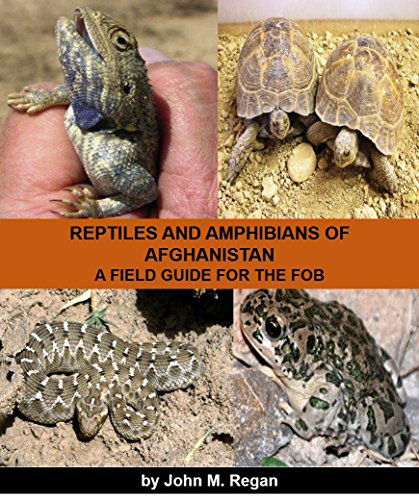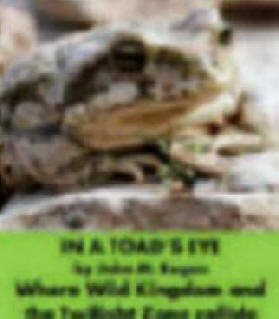

< >
Afghan Arabia Wild
I've been working at discovering some more about these fantastic Saudi reptiles. According to the scant resources I have found there are over 100 species of lizards on the peninsula and some 53 species of snakes, to include cobras, horned vipers, and sea snakes. I have only recently come across one snake and he is pictured below. But the lizard population here is extraordinary, especially the beautiful gecko family. In the pictures below you'll see the variety of the species I've found so far.
Those are my gnarly hands holding this little fellow called a Sand Racer. These snakes, Psammophis schokari, are common and come out in the evening. This specimen looks just like a Saudi Arabian version of a garter snake. Found out later that this very harmless looking fellow is actually mildly poisonous; a rear fanged species.
< >
Toad Headed Agama, Phrynocephalus maculatus. About five to seven inches long and most of that it tail. A spindly and delicate lizard, this type of Agama likes rocky, barren terrain. Found him late in the season and late in the day, too. Temperature in the upper eighties. Cool for these guys.
< >
This two inch gecko specimen was hiding under a loose pile of rocks. Hemidactylus yerburi, Yerburi's Gecko? orTropiocolotes nattereri ? He made very little effort to escape and politely stood still for several photos, although I believe some "sun shock" was the real reason for his lack of movement. I took picture on the far right a couple of months after the the other two, and in a different location. Both times this cooperative little gecko stayed in place while I filmed. Geckos seem to be only lizards over here that do not dig burrows. On the right is an exceptionally interesting species. I have never seen a white lizard let alone a white gecko. This guy is about six inches long. He has a regular territory he patrols every night on the outside walls of my Saudi villa. Many of these odd white lizards come out every night.
The cave is either the home of group of desert foxes or the larger monitor lizards that inhabit the area. Both regularly make meals out of lizards. The middle photo is is the proof that somebody besides Saudis are eating these eat big lizards - the tail of a spiny tailed or dhub lizard left over from a meal.
These photos above were shot at the Riyadh Zoo. On the left is perhaps the most famous lizard in Saudi Arabia, Uromastyx aegyptius. Called a Dhub in Arabic, he is hunted and eaten just like certain species of iguanas. Dhubs are not small, the fellow in the above photo is close to two feet long and ten pounds. Dhubs are plant eaters. The Saudi peninsular is not one big desert, but harbors several climate types, enough for this big guy to keep his belly full and grow to a very respectable size.
This is Dhub was captured just outside of the compound where I work. That's me holding this lovely fellow. As evident from the photos these guys are quite feisty and a reptile of that size could deliver a bite guaranteed to send a message. But the big fellow seemed to quiet down when I picked him up. A Saudi friend of mine over here told me that dhubs exhibit a lot of local color variation. After a bit of field research on my own I found out that he is right. These guys are so big you can actually see them popping up out of their burrows from hundreds of feet away. Trying to sneak up on one for a photos is a real challenge, however. They are extremely alert and very fast. The photos below show examples of their burrows. They remind me of reptilian prairie dogs they way they pop in and out. I love the dinosaur like pose of the picture on the right. Took this one from my truck.
Blanford's Agama, Agama blanfordi. This guy really enjoys his sunbath. Not really small, he was about eight inches long, and he allowed me to take several photos; some from a foot away with a close up lens. I call them rock baskers and I have found many of them lying out like this in 100 degree plus heat. They must rely heavily on camouflage. The lizard on the left let me drive my truck to within three feet of him and never moved.
This reptile, Mesalina guttalata, bears a striking resemblance to a the American Alligator Lizard in body shape. I was only able to find this one four inch specimen under a rock in a dried stream bed. This one appears to be the same species displaying local color variation. The photos are from areas about 100 kilometers apart.
< >
This handsome lizard is a common sight in parts of the desert. I usually find them scurrying away after disturbing them while I walked. They are exceptionally fast and I believe they live in small sand burrows. At least I did see one of them take refuge in that kind of home. Unlike some of the other small lizards I've found, these guys spend a lot of time in the open. Note the somewhat monitor lizard appearance of the head. The largest I've seen was close to seven inches long.
Here is a part of a series of pictures I took that captured the species above mating. In what is common lizard behavior the male, Acanthodactylus micropholis, grasps the female in his jaws. This occurred, however, after she led him on a swift and strenuous circular chase. My digital camera had no chance of keeping up with that part of the display. During the actual mating the female seemed fairly bored by the entire affair. On the far right is the same male in a posture of downright pride. Actually, he is feeling somewhat threatened by the photographer.
Close up shot of Acanthodactylus micropholis.
The handsome fellows above are Fringed Toed Lizard, Acanthodactylus schmidti and A. boskianus), loves the early morning and early evening hours. These guys grow to about a foot in length, are stout bodied and leave conspicuous trails all over the sand as seen on the right. I like to call them "Shiver Tail" lizards. Just prior to pouncing on a tasty insect the tail quivers and vibrates rapidly. Watching them hunt is very amusing and they display a beautiful orange color. The close up photo shows the reason for the obvious name. Actually a lot of the lizards over here display these fringes, but they are especially noticeable in this species.
Eremias fasciata. About two to three inches long, these strikingly colored, extremely small and slender lizards are very common, but generally move so fast they are difficult to photograph. I was fortunate with this specimen because he was preoccupied digging a burrow. I call these beautiful reptiles striped tail lashers. These guys scurry around and pause every foot or, pause and lash their tail in dramatic fashion. In what is probably a difference in males and females the tail is either distinctly pink or a light blue. These diminutive lizards are very common; I counted more than thirty of them in an hour. They might be small, but they are exceptionally fast and nearly impossible to catch. All of the lizards I have discovered here, with the exception of the the geckos, are extremely industrious burrow diggers and in loose sand even more so. I had originally thought that the little fellow peaking out was the same species exhibiting the mating behavior, but on close inspection that is not the case. It is quite fascinating to watch these "sand swimmers" as they burrow about and pop up out of the sand a foot or so later.
< >